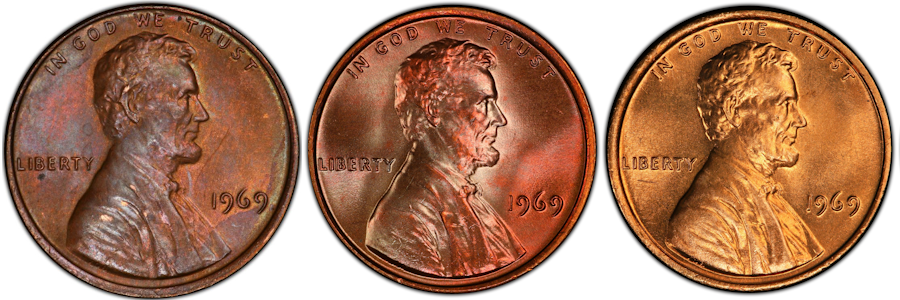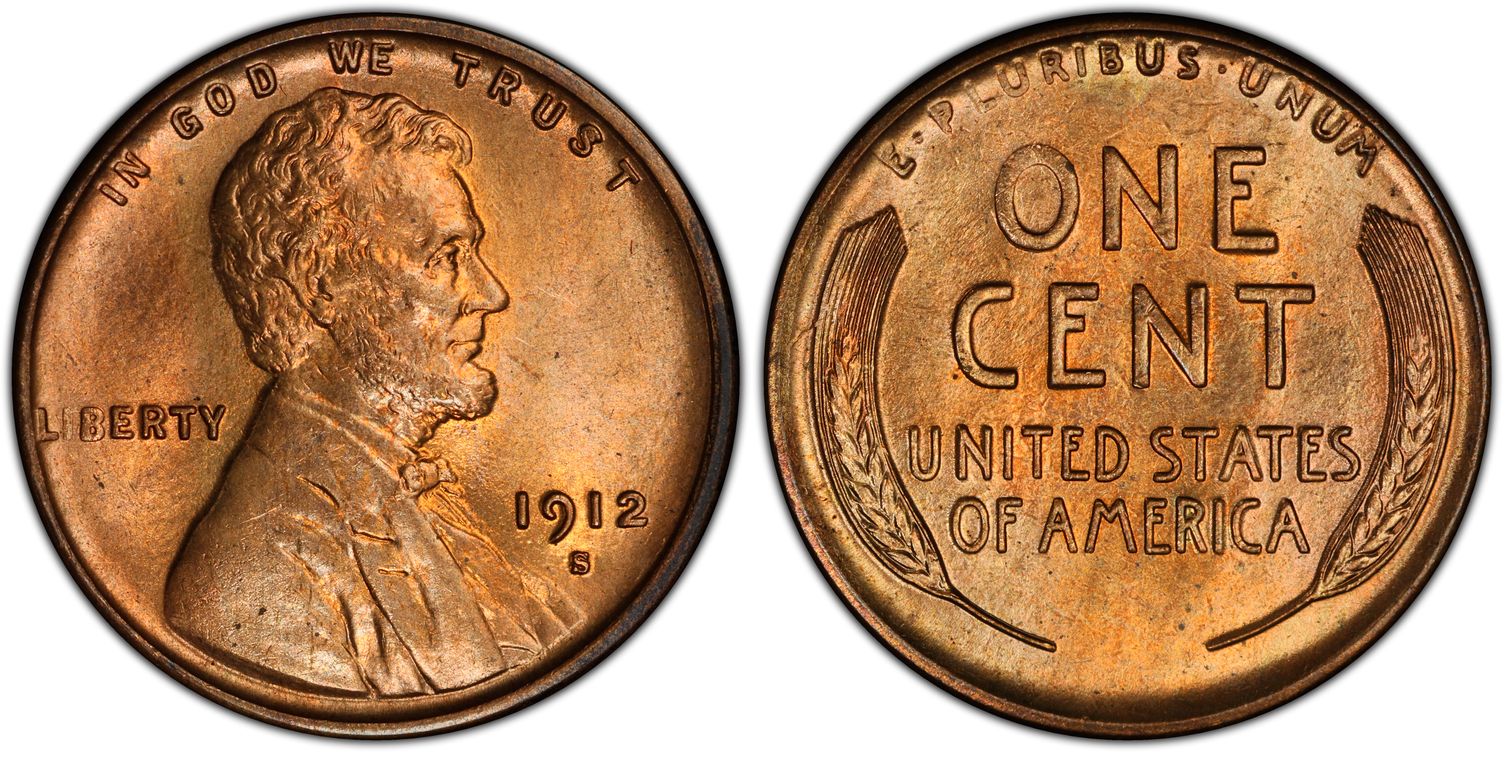1912-S Penny Values, Errors, and Rarities
The 1912-S is a scarce “semi-key” Lincoln penny that has been in high demand since shortly after they were made. A low mintage and heavy circulation has greatly reduced the number of surviving coins. Even circulated XF-45 to AU-55 examples are very difficult to find.
Only 4,431,000 Lincoln pennies were struck at the San Francisco Mint in 1912. Mint State 1912-S Lincoln pennies are so rare that even the usually ignored “Brown” ones sell for hundreds of dollars.
1912-S Lincoln Penny Prices: Mint State Grades
1912-S Cent (Brown) Prices
1912-S Cent (Red-Brown) Prices
1912-S Cent (Red) Prices
DID YOU KNOW?
Coins are graded on a 70-point scale, where 1 is so worn as to be almost unidentifiable, and 70 is perfect, with no damage or blemishes visible even under magnification.
RD, RB, BN: What Do They Mean?
Lincoln Cents are not only graded by condition but also by how much of their original color remains. There are three classifications: Brown (BN), Red-Brown (RB), and Red (RD).

1969 Lincoln Cents graded BN, RB, and RD (PCGS)
These definitions are more subjective than the physical grades laid out in the 1-70 coin grading scale.
Circulated cents and uncirculated ones exposed to air develop a brown, sometimes chocolatey color. All things being equal, cents graded BN are far less desirable to collectors than RB or RD coins.
Red-brown cents have a good portion of their original luster remaining. The exact amount of red remaining for a coin to be considered RB can differ among grading services. Some collectors find that certain RB cents can have more eye appeal than a “better” RD coin of the same condition grade.
Red coins have almost all their original luster present. For older cents, this is usually only possible for new coins kept in rolls or airtight containers or from unopened Mint Sets.
Most Valuable 1912-S Lincoln Pennies: Auction Records and Finest Known
The finest-known examples of the 1912-S Lincoln cent are all graded MS-66 RD. 14 of these have been graded by PCGS, and one at NGC.
The record auction price paid for a 1912-S Lincoln cent was $27,600 for an MS-65 RD at a 2003 Heritage auction. Recorded auction records may or may not reflect the highest price ever paid for a coin, since person-to-person private sales are not recorded.

Finest-Known 1912-S MS66 RD Lincoln Cent (PCGS)
1912-S Lincoln Cent Errors and Varieties
Variety coins are coins that have had something happen to the die before the coin is struck. Common coin varieties include Doubled Die on Reverse (DDR), Doubled Die on Obverse (DDO), and Repunched Mint Mark (RPM.)
The difference between variety coins and error coins is that variety coins result from a mistake on the coin die. Many hundreds or even thousands of coins with the same defect can be minted before the mistake is noticed.
The only major 1912-S Lincoln penny error coin is the 1912-S/S, which has a second S mint mark punched over and slightly off-center of the first S. Prices for even worn circulated VF-20 1912-S/S can exceed $100! Circulated prices for 1912-S/S Lincoln pennies range from $45 for an extremely worn G-4 BN, to $325 for a nearly-mint Almost Uncirculated AU-58 RD.
Mint State 1912-S/S RD Lincoln pennies do not appear above MS-63. This is one reason the higher Mint State RB and BN versions fetch such high prices.
1912-S/S Lincoln Penny Prices
1912-S/S Cent (Brown) Prices
1912-S/S Cent (Red-Brown) Prices
1912-S/S Cent (Red) Prices
Read more about coin collecting and coin prices from the numismatic experts at Gainesville Coins:
Collector Resources for Understanding the Hobby of Collecting Coins
1969 Lincoln Penny Values, Errors, and Rarities
1968 Lincoln Penny Values, Errors, and Rarities
1964 Lincoln Penny Values, Errors, and Rarities
Most Asked Questions About US Mint Coins: Buyer's Guide
Top 15 Best Silver Coins To Collect - Find Your Favorite

Steven Cochran
A published writer, Steven's coverage of precious metals goes beyond the daily news to explain how ancillary factors affect the market.
Steven specializes in market analysis with an emphasis on stocks, corporate bonds, and government debt.
